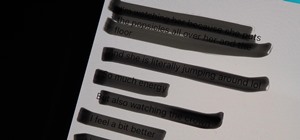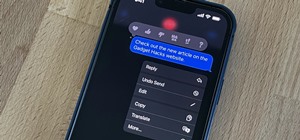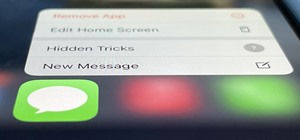So the new iPhones have arrived. Like last year, Apple released three iPhones in three different sizes that vary in price and specs. There's the base model iPhone 11, and then there are the real deal, premium models, the iPhone 11 Pro and Pro Max.
The iPhone 11 Pro and 11 Pro Max replace the iPhone XS and XS Max. They have nearly identical specs, but with different display size, resolution, and battery capacity. These are the best iPhones available with the Apple A13 Bionic SoC and the new triple rear cameras. And that's just the tip of the iceberg.
iPhone 11 Pro & Pro Max Highlights
- Preorder Sept. 13 or buy on Sept. 20
- Prices range from $999–$1,349 for the Pro and $1,099–$1,449 for the Pro Max
- Available in Silver, Gold, Space Gray, and Midnight Green
- Both models are just a tiny bit larger than the XS and XS Max
- Upgraded Super Retina XDR OLED screens support P3 gamut and more
- 3D Touch has been removed
- Will ship with iOS 13 pre-installed
- Rear camera has been upgraded with a third lens and new features
Jump to a section: Dates | Storage | Price | Body | Basics | Software | Skin | Display | Performance | Battery | Front Camera | Rear Camera | Audio | Media Formats | Sensors | Connectivity | Security | Box Includes
Important Dates
The iPhone 11 Pro and 11 Pro Max were announced during the "By innovation only" event at Cupertino, California on September 10, 2019, at the Steve Jobs Theater. They were announced alongside the iPhone 11, the new seventh-generation iPad, and new Apple Watch Series 5.
The iPhone 11 Pro and 11 Pro Max are available for preorder starting Friday, September 13, 2019 at 5 a.m. Pacific (8 a.m. Eastern). You can preorder the phone from various retailers, major wireless carriers, and Apple.com. The iPhone 11 Pro and 11 Pro Max will ship a week later on Sept. 20. On this date, the iPhones will be available in Apple stores, at retailers, and for purchase online.
- Announcement date: Tuesday, Sept. 10, 2019
- Preorder date: Friday, Sept. 13, 2019 (5 a.m. PDT)
- Release date: Friday, Sept. 20, 2019
Storage Capacity
The iPhone 11 Pro and 11 Pro Max use the same storage tiers as last year: 64 GB, 256 GB, and 512 GB. As usual, there is no support for expandable storage via microSD card. However, it is still possible to expand storage with flash drives such as the SanDisk iXpand Flash Drive.
- Storage available: 64 GB , 256 GB, 512 GB
- Expandable storage: no
Prices
I know this next bit of info will make many happy, Apple has kept the price of both the iPhone XS and XS Max for the next-generation iPhones. For the same entry price of $999 or $1,099, you can get the iPhone 11 Pro and 11 Pro Max, respectively.
As with previous iPhones, you get a one-year limited warranty and up to 90 days of complimentary tech support. With AppleCare+ and AppleCare+ with Theft and Loss, warranty expands to two years and you get additional features such as accidental damage protection (up to two incidents) and 24/7 tech support. Base-tier AppleCare+ is $199, but for $299, you'll also get theft and loss protection. If you use the iPhone Upgrade Program, this protection plan is automatically included in the pricing.
- iPhone 11 Pro Price: $999 (128 GB), $1,149 (256 GB), $1,349 (512 GB)
- iPhone 11 Pro Max Price: $1,099 (128 GB), $1,249 (256 GB), $1,449 (512 GB)
- AppleCare+: $199 or $299 (or $9.99 or $14.99 each month)
Body
The iPhone 11 Pro and 11 Pro Max use a "surgical-grade" stainless steel metal frame paired with reinforced glass on both the front and rear of the phone. The glass on the rear aids in wireless charging, which the iPhone 11 Pro and Pro Max support via the Qi standard. The back will also come in a matte finish for a less slippery texture. As far as colors go, you will be able to get either model in Silver, Gold, Space Grey, or Midnight Green
Keeping with Apple's commitment to being an eco-friendly company, both the iPhone 11 Pro and 11 Pro Max are free of mercury, arsenic, brominated flame retardant, PVC, and beryllium. They also have a low-carbon manufacturing process and include a stainless steel frame that can be recycled.
- Frame: stainless steel
- Back: glass, matte finish
- Finish: silver, gold, space gray, midnight green

Basics
Both models have different dimensions from last year so you will need new cases. Both the iPhone 11 Pro and 11 Pro Max are slightly larger, anywhere from 0.01 to 0.02 inches larger in length, width, and height. Be aware that both phones are heavier, with the iPhone 11 Pro being 0.39 oz heavier and the iPhone 11 Pro Max increasing the weight by 0.63 oz.
Apple will retain the IP68 rating. What this means is that both iPhones are dust-proof and can be submerged in water. However, this year, Apple has doubled the maximum depth from two meters to four meters for up to 30 minutes. But the phone isn't waterproof and there's some fine print you should know about:
- Height: 5.67 inches (11 Pro), 6.22 inches (11 Pro Max)
- Width: 2.81 inches (11 Pro), 3.06 inches (11 Pro Max)
- Depth: 0.32 inches (11 Pro), 0.32 inches (11 Pro Max)
- Weight: 6.63 ounces (11 Pro), 7.97 ounces (11 Pro Max)
- Dust/water resistance: IP68 under IEC standard 60529
- Mobile network operators: AT&T, Sprint, T-Mobile, Verizon
In regards to the environmental operating requirements, Apple is following the same standards it has since iPhone 7 models.
- Operating temp: 32° to 95° F
- Nonoperating temp: -4° to 113° F
- Relative humidity: 5–95% noncondensing
- Operating altitude: up to 10,000 feet (though could be more)
Display
The iPhone 11 Pro and 11 Pro Max have the same display size, resolution, and aspect ratios of their predecessors. They use OLED panels again, the same as the one used in the Galaxy S10, and if DisplayMate is any indication, it will be an industry-leading screen.
Both displays still support True Tone for an improved color temperature depending on the surrounding lights. HDR is supported via Dolby Vision and allows you to enjoy HDR content from YouTube and Netflix. It also has a wide color display via the P3 color gamut, oleophobic coating for less fingerprints, and impressive 2,000,000:1 contrast ratio.
Another significant change is the loss of 3D Touch. First introduced in the iPhone 6s, this feature has been a staple in iOS for years. However, Apple has ditched this in favor of Haptic Touch, which, for all intents and purposes, is just a marketing term for long-press.
- Screen size: 5.8 inches and 6.5 inches
- Screen resolution: 2,436 x 1,125 pixels (11 Pro) and 2,688 x 1,242 pixels (11 Pro Max)
- Pixel density: 458 ppi
- Screen type: OLED, Super Retina XDR
- HDR: Dolby Vision and HDR10
- Notch: yes
- Screen-to-body ratio: currently unknown
- Aspect ratio: 19.5:9
- Minimum brightness: Unknown
- Maximum brightness: 1,200 nits
- Refresh rate: 60 Hz (120 Hz for touch-sensing)
- Color temperature: Unknown
- 3D Touch: no
Performance
Both the CPU and GPU have improved, with Apple claiming both are the fastest on any smartphone. The A13 Bionic processor is also much better at performing machine learning, the hot buzzword around the tech industry. Apple has taken several measures to improve power efficiency so that the SoC consumes only what it needs, resulting in improved battery life.
- Memory: 4 GB RAM
- Processor: Apple A13 Bionic
- Chip size: 7 nanometer
- Coprocessor: Third-generation Neural Engine (eight cores)
- CPU frequency: Unknown
- CPU cores: six cores
- GPU: Apple-designed (unknown model)
- GPU cores: Four cores

Battery
The iPhone 11 Pro and Pro Max will come with an even larger battery than last year's models. With similar specs and an even more efficient A13 Bionic core, battery life should improve. According to Apple, the iPhone 11 Pro gets over four hours while the 11 Pro Max improves up to five hours. It supports wireless charging up to 7.5 watts, just like last year. And for the first time, Apple is including a 18 W charger so you can fast charge your iPhone right out the box, no additional accessories needed.
- Battery: rechargeable lithium-ion
- Capacity: Unknown
- Wired charging: yes, USB PD (18 W)
- Wireless charging: yes, Qi standard (7.5 W)
Front Camera
The TrueDepth Camera has seen several improvements for this year's iPhones. Starting with the resolution, the front-facing camera is now 12 MP instead of 7 MP. It has the same Portrait Lightning feature from last year, with all six effects as well as Depth Control. Photos are enhanced thanks to next-generation Smart HDR, and shaky hands are reduced thanks to EIS.
Videography on the front camera has gotten better with the addition of 4K recording at up to 60 fps. It also supports slow-motion video for the first time as well up to 120 fps at 1080p.
- Resolution: 12 MP
- Aperture: f/2.2
- Zoom: Unknown
- Flash: yes Retina Flash (screen flash)
- Image stabilization: yes, EIS
- RAW support: no
- Object detection: bodies, faces, winks, tongues
Rear Camera
For the first time, the iPhone 11 Pro and 11 Pro Max have a triple rear camera setup. The primary is a wide-angle lens at 12 MP and f/1.8 aperture. The second is a 12 MP telephoto lens with f/2.0 aperture, and the third is a new ultra-wide lens. This setup can be found on many Android smartphones, but what makes the iPhone 11 Pro special is that none of the lenses are limited in their performance. All three calibrated for color and exposure.

Both the iPhone 11 Pro and 11 Pro Max have a 4x optical zoom range, not 4x optical zoom. With the new ultra-wide camera, the focal length is at 13 mm, or 0.5x zoom. With the telephoto lens, the focal length increases to 52 mm or 2x zoom, which translates to 4x optical zoom range (0.5 times 4 equals 2). Realistically, it's the same 2x optical zoom as previous generations, but with an extra "zoomed out" mode thanks to the ultra-wide lens.
A feature coming later this year is Deep Fusion, which leverages the Neural Engine to take multiple photos: four short images, four secondary images, and one long exposure. Then, using the improved A13 Bionic, it combines these images into a single final image with better detail and less noise.
There is a new night mode which brightens low light situations and an improved Smart HDR for photos. Optical image stabilization can be found on the wide-angle and telephoto, but not on the ultra-wide lens. However, this lens does have electronic image stabilization.
- Resolution: 12 MP (wide-angle), 12 MP (telephoto), 12 MP (ultrawide)
- Aperture: f/1.8 (wide-angle), f/2.0 (standard), f/2.4 (ultrawide)
- Zoom: 2x optical (10x digital)
- Flash: Brighter True Tone flash with Slow Sync
- Image stabilization: optical, wide-angle and telephoto
- RAW support: yes
- Lens cover: sapphire crystal
- Object detection: bodies, faces
- Formats: HEIF, JPEG

All three cameras shoot 4K video at 60 fps in extended dynamic range. And to make the transition between lenses seamless, the iPhone 11 Pro and 11 Pro Max preserve settings such as autofocus and exposure from the current lens with the other lenses. One neat feature is QuickTake which lets you record a video simply by holding the shutter button.
- Resolution: 720p, 1080p, and 4K
- Max frame rate: 30 fps for 720p; 60 fps for 1080p and 4K
- Slow motion: yes, 1080p at 120 or 240 fps
- Time-lapse: yes, with stabilization
- Photos: 8 MP stills while recording 4K
- Zoom: 4x optical, 6x digital
- Flash: yes, Brighter True Tone flash
- Image stabilization: optical
- Lens cover: sapphire crystal
- Object detection: bodies, faces
- Audio: stereo sound
- Formats: H.264, H.65 (HEVC)
Audio
Nothing major has changed regarding audio. Stereo speakers make a return for clear audio which outputs from near the earpiece and a bottom-firing speaker. The new buzzword is the new spatial audio playback for a more immersive experience. Apple is also including a configurable maximum volume limit to protect your ears. It also supports Dolby Atmos for a more spatial sound.
There is no headphone jack and no dongle in the box. However, you can buy a dongle if you don't have one. You can also share audio with someone else's AirPods or Beats headphones using the new Audio Sharing feature.
- 3.5 mm headphone jack: no
- Stereo speakers: yes
- Mics: Unknown
- Max speaker volume: unknown

Sensors
Nothing special has changed when it comes to the sensors of the new iPhones, as they are the same from last year.
- Sensors: barometer, accelerometer, three-axis gyroscope, proximity sensor, face ID, ambient light sensor
Media Format
There's also nothing unusual about the audio and video formats supported.
- Audio: AAC-LC, HE-AAC, HE-AAC v2, Protected AAC, MP3, Linear PCM, Apple Lossless, FLAC, Dolby Digital (AC-3), Dolby Digital Plus (E-AC-3), Dolby Atmos, and Audible (formats 2, 3, 4, Audible Enhanced Audio, AAX, and AAX+)
- Video: HEVC, H.264, MPEG-4 Part 2, and Motion JPEG
Connectivity
Both the iPhone 11 Pro and 11 Pro Max support 802.11ax, aka Wi-Fi 6. Aside from them, only Samsung's flagships support the new standard which offers improved security, faster speeds, and better connectivity. NFC is still on board for Apple Pay and includes support for scanning tags (a feature added in iOS 12). There is also a new ultra-wideband chip known as the U1. Starting September 30, this chip will make AirDrop even better by providing direction aware suggestions.
- Wi-Fi: 802.11ax (Wi-Fi 6)
- Bluetooth: 5
- NFC: yes
- Cellular: Dual SIM (nano-SIM and eSIM), Gigabit-class LTE with 4x4 MIMO and LAA
- Port: Lightning
- Other: iBeacon microlocation, AirPlay 2, AirDrop
- Apple Pencil: possible
Model A2160
- FDD-LTE (Bands 1, 2, 3, 4, 5, 7, 8, 12, 13, 14, 17, 18, 19, 20, 25, 26, 29, 30, 66, 71)
- TD-LTE (Bands 34, 38, 39, 40, 41, 42, 46, 48)
- CDMA EV-DO Rev. A (800, 1900 MHz)
- UMTS/HSPA+/DC-HSDPA (850, 900, 1700/2100, 1900, 2100 MHz)
- GSM/EDGE (850, 900, 1800, 1900 MHz)
Model A2161
- FDD-LTE (Bands 1, 2, 3, 4, 5, 7, 8, 12, 13, 14, 17, 18, 19, 20, 25, 26, 29, 30, 66, 71)
- TD-LTE (Bands 34, 38, 39, 40, 41, 42, 46, 48)
- CDMA EV-DO Rev. A (800, 1900 MHz)
- UMTS/HSPA+/DC-HSDPA (850, 900, 1700/2100, 1900, 2100 MHz)
- GSM/EDGE (850, 900, 1800, 1900 MHz)
Security
Face ID received an upgrade, as it now able to work at more angles. It is also 30% faster than before. As usual, your data doesn't leave the iPhone with the more sensitive information being stored in the Secure Enclave for maximum protection.
- Security: Face ID and USB restricted mode
Software
This is no surprise, but the iPhone 11 Pro and 11 Pro Max will ship with iOS 13 installed. There are over 200+ new features that the new software adds, including a new dark mode, improved Apple Maps, and much more.
- Software: iOS 13
Box Includes
The included components when purchased will be the same as the 2018 models, so don't expect much here.
- iPhone 11 Pro or 11 Pro Max
- EarPods with Lightning connector
- Lightning to USB-C cable
- USB 18-watt power adapter
- Documentation
Just updated your iPhone? You'll find new features for Podcasts, News, Books, and TV, as well as important security improvements and fresh wallpapers. Find out what's new and changed on your iPhone with the iOS 17.5 update.






















Be the First to Comment
Share Your Thoughts